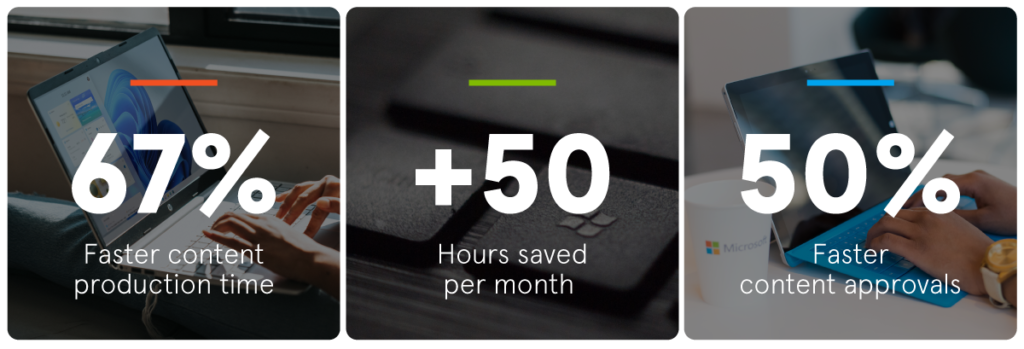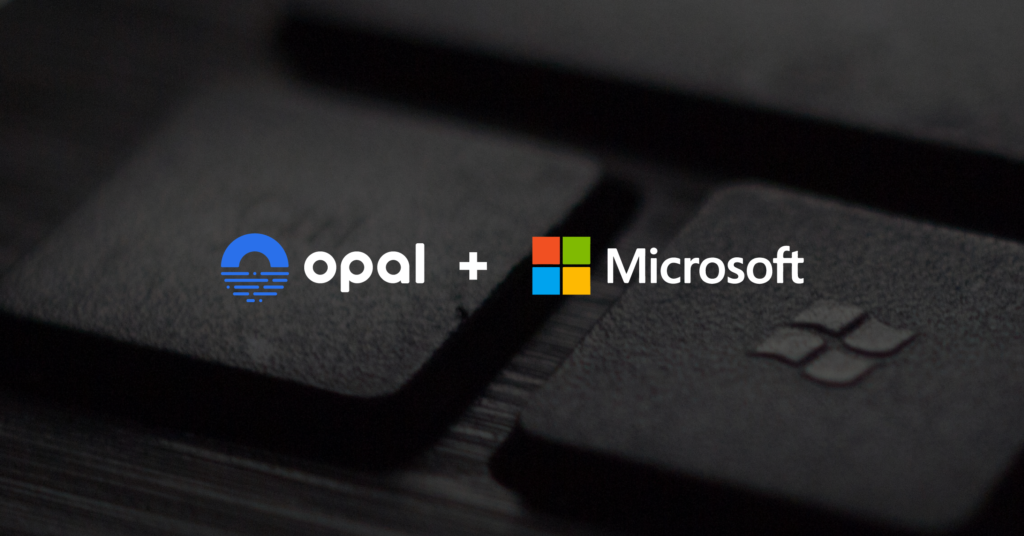Microsoft Learn is the hub for individuals and organizations to access training, certifications, documentation, and a variety of other resources for learning about Microsoft products. Essentially, if Microsoft builds it, there are resources about it – their work spans everything from Microsoft Azure and Microsoft Dynamics 365 to Microsoft 365, as well as many other applications. The product marketing team creates engaging content that it publishes across a wide range of channels to their engaged user base.
Industry: Information Technology
Annual Revenue (company wide): $198.3 billion
Number of Employees (company wide): 221,000
Teams in Opal: Brand, Corporate Comms, Internal Communications, Partner Communications, Education, Retail, Regional Markets
By the Numbers

Challenge: Scaling a Mountain of Content
The Product Marketing team behind Microsoft Learn creates two to three blog posts and up to twelve social posts per week. When creating a significant amount of content, even the most nimble teams can be buried under an avalanche of plans, feedback, and approvals. On top of that, many of the content pieces are driven by – and hinge on information from – key external stakeholders. Intaking requests for content from those stakeholders has caused challenges, as the intake documents were incomplete or inconsistent. This became a roadblock for creating new content. “We had intake spread out all over the board. It was a real problem,” Marketing Channel Lead Allison Kraker said. “There were so many different places where the team had to input information to kickstart the process.” The Product Marketing team needed an answer to overhaul the intake process and reclaim efficiency as a whole.
Solution: “Stamp” Out Inefficiency from Start to Finish
To solve their intake issue, the team used Opal Stamps, a feature that creates templates for repeat workflows. They created a Stamp for each content request type, that would pre-populate specific labels, workflow and instructions on completing the form. “Whether it’s purely social, or it’s blog and social, or a stakeholder blog, different fields populate in the Stamp,” Allison explained. “Not only do we use this for all external intakes, but the team loves the intake process so much that we actually do a fair amount of internal communication with it as well.”
Utilizing Stamps to overhaul the intake process proved game-changing. That’s not the only way Opal enabled the Product Marketing team to achieve greater efficiency. Before, a spreadsheet served as a content calendar – and approvals happened through back-and-forth emails. Replacing the spreadsheet with one central, visual calendar made a massive impact. “We had this mountain of content and we needed an easy way to manage and plan for it,” Allison said. “Now the team uses one tool to do all of their planning for blog and social across the board.”
Lastly, Opal Presentations maximized time (and earned instant fans from the team) by eliminating the busywork that building decks once required. Instead of taking half a day to craft a shareable PowerPoint, the auto-built Presentations meant they’d be done in mere seconds. “It just saves so much time because the team isn’t creating their own presentations in PowerPoint with screenshots they took themselves,” Allison said. “That was a game changer.”

Results: More Content, Less Time
Since adopting Opal, the difference is clear: the Product Marketing team cut their content production time from 3 weeks down to just 5 days. Beyond that, the overall amount of time needed for approvals dropped by an astounding 50% since implementation. “We’re able to produce way more in about half the amount of time, because we got ourselves out of email, spreadsheets, and chat.” Allison reflected. For Microsoft flagship events – Microsoft Ignite and Microsoft Build – the Product Marketing team was able to deploy 60-piece content blitzes over a 48-hour period. From content intake at the beginning to showcasing completed work, every step became more efficient. Allison sums up the outcome of adopting Opal, saying, “More content, less time!”

